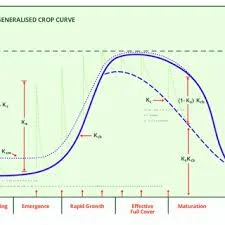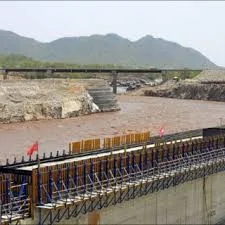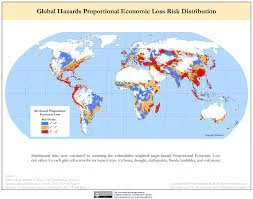The On-Line Calculation fields are as i)Agriculture ii) Aircraft iii)General Math iv)Physics v)Chemistry vi)Chemical Engg. vii)Civil Engg. viii)Mechanical Engg. ix)EEC Engg. x) Fisheries Engg. xi) Poultry Engg. xii) Merine Engg. xiii) Nuclear Engg. xiv) Accounting and Finance. and many more. They assist Students, engineers, and researchers in analyzing and optimizing their regular work. It is the Blogpost for continuous use and I am requesting you to share as much as you can.
Donate for the Poorest Students
You can support for the poorest students. Copy the link in your browser & Donate as small as possible..
https://www.paypal.com/donate/?hosted_button_id=R3MNE48JU7KGL
Thursday, 13 July 2023
Concrete Slab Calculator:Engineering & Science Calculators: Free Online Tools
Concrete Slab Calculator
Culvert Capacity Calculator:Engineering & Science Calculators: Free Online Tools
Culvert Capacity Calculator
Irrigation Calculator:Engineering & Science Calculators: Free Online Tools
Definition: Irrigation system water demand is the amount of water required to meet the evapotranspiration (ET) needs of the crop, considering the irrigation efficiency. In other words, it's the volume of water that needs to be applied to the crop zone after accounting for losses due to evaporation, deep drainage, and other factors.
The three factors crop coefficient (Kc), irrigation efficiency (Ei), and irrigation time period, all play a crucial role in determining irrigation water demand
Click the Translate button(see right) on this post to set your Own Language to understand more perfectly!!
Irrigation Calculator
Continue Definition:
Understanding Irrigation Management: Crop Coefficient, Irrigation Efficiency, and Irrigation Time Period
Crop Coefficient (Kc):
The crop coefficient (Kc) is a factor that accounts for the difference in water use between a specific crop and the reference crop (usually well-watered grass). It essentially tells you how much a particular crop transpires compared to the reference crop under the same conditions. Kc values vary depending on the crop type, growth stage, and climatic conditions. For example, corn will have a different Kc than tomatoes, and both will have varying Kc values throughout their growing seasons.
Example of various Crop Coefficient:
Here's a table listing crop coefficients (Kc) for various irrigation plants in general use. These are averages and can vary depending on the specific growth stage and climatic conditions. It's always recommended to consult local resources or agricultural extension services for the most accurate Kc values for your specific situation.
Crop Type Kc Range
Alfalfa1.10 - 1.25
Barley0.80 - 1.10
Corn0.80 - 1.10
Cotton0.80 - 1.20
Fruits (orchards)0.70 - 1.00
Grass (lawns)0.70 - 0.85
Peanuts0.80 - 1.10
Potatoes0.70 - 1.00
Rice1.00 - 1.20
Soybeans0.80 - 1.10
Sugarcane1.20 - 1.40
Tomatoes0.70 - 1.10
Vegetables (general)0.70 - 1.00
Wheat0.80 - 1.10
Remember, these are just a general guide. For the most accurate Kc values for your specific crop and location, consult with local agricultural resources or extension services. They can provide Kc data specific to your region and crop variety.
Irrigation Efficiency (Ei):
Irrigation efficiency represents the percentage of irrigation water that reaches the plant root zone for beneficial use by the crop. Unfortunately, some water is lost during the irrigation process due to factors like evaporation, wind drift, runoff, or deep drainage beyond the root zone. A higher irrigation efficiency signifies less water waste. Different irrigation methods have varying efficiencies, with drip irrigation being generally the most efficient, followed by sprinkler and surface irrigation methods.
Irrigation Time Period:
The irrigation time period refers to the interval between irrigation events. It's determined by the crop's water needs, soil moisture capacity, and climatic conditions (mainly temperature, humidity, and wind speed) that affect evapotranspiration (ET). ET is the combined process of evaporation from the soil surface and transpiration from the plant. By monitoring soil moisture or relying on ET data, farmers can determine the appropriate time period between irrigations to ensure adequate water supply for the crop without overwatering.
Calculating Irrigation Water Demand:
The following equation helps estimate the total water demand (ETc) for your crop over a specific period:
ETc = ETo x Kc x Time Period
where:
ETc - Crop Evapotranspiration (total water demand in mm or inches)
ETo - Reference Evapotranspiration (data typically available from weather stations or calculated using various methods)
Kc - Crop Coefficient (specific to your crop and growth stage)
Time Period - The time interval between irrigations (days)
Daily or Cycle Demand:
To determine the daily or cycle water demand, simply divide the total water demand (ETc) by the number of days (or cycles) in your irrigation time period.
Putting it All Together:
By understanding crop coefficient, irrigation efficiency, and irrigation time period, farmers can create an efficient irrigation plan. They can use the equation above to estimate the total water needs of their crop and then adjust for irrigation efficiency to determine the amount of water to apply. Monitoring soil moisture or relying on ET data helps determine the appropriate irrigation time period to ensure the crop receives water when needed without wasting water.
Example:
Imagine you're growing corn during a period with an average daily ETo of 5 mm and a Kc value for corn at that stage is 0.8. If you're using a drip irrigation system with an efficiency of 85%, and your soil conditions allow for irrigations every 3 days, here's how to calculate your irrigation needs:
Total Water Demand (ETc) for 3 days:
ETc = 5 mm/day x 0.8 x 3 days = 12 mm
Water to Apply Considering Efficiency:
Water Needed = ETc / Irrigation Efficiency
Water Needed = 12 mm / 0.85 = 14.1 mm
Therefore, you would need to apply approximately 14.1 mm of water through your drip system every 3 days to meet the crop's water needs during this period.
Remember, these are estimations, and real-world conditions can vary. Monitoring soil moisture and adjusting irrigation practices as needed is crucial for optimal water management.
How can we utilize the knowledge of Irrigation calculator to Earn Money in real life??????
The knowledge of irrigation calculators can be a valuable tool in several ways to generate income:
Direct Services:
Irrigation Consulting: You can leverage your knowledge of irrigation systems and water management to offer consulting services to farmers, landscapers, or homeowners.
This could involve:
Designing irrigation systems: Analyze a client's property, soil type, and crop needs to design an efficient irrigation system that minimizes water waste.
Creating irrigation schedules: Utilize irrigation calculators and local weather data to create customized irrigation schedules for clients, ensuring their crops receive the right amount of water at the right time.
Troubleshooting irrigation problems: Help diagnose and solve irrigation system issues clients might be facing, like uneven watering, low pressure, or clogged emitters.
Smart Irrigation System Installation: With the growing popularity of smart irrigation systems, you can specialize in their installation and setup.
This could involve:
Installing sensors and controllers for smart irrigation systems.
Programming the systems based on local climate data, crop needs, and soil moisture levels.
Providing training and support to clients on using their smart irrigation systems effectively.
Indirect Services:
Improving Crop Yields: By optimizing irrigation practices based on irrigation calculator data, you can help farmers and growers achieve higher crop yields. This translates to increased profits for them and potential recurring business for you.
Water Conservation Advocacy: Educate communities and businesses about the importance of water conservation in agriculture. You can use irrigation calculator data to demonstrate the impact of efficient irrigation practices on water savings.
This knowledge can be valuable for:
Promoting water-saving irrigation technologies and practices.
Developing educational programs on sustainable water management in agriculture.
Consulting with municipalities or water districts on water conservation strategies.
Content Creation: Share your irrigation expertise by creating valuable content online:
Develop a blog or YouTube channel offering tips and tricks on using irrigation calculators effectively.
Create online courses teaching people how to design their own irrigation systems or optimize their watering practices.
Sell downloadable resources like irrigation system planning templates or crop-specific irrigation schedules.
By applying your knowledge of irrigation calculators in these ways, you can turn it into a source of income through direct services, improved client outcomes, or educational content creation.
Do YOU Want To Earn Money In Various Ways, Click The Link & Explore Your Field of Interest!!!
Hydraulic Jump CalculatorCalculators for Students, Engineers & Researchers:free Online Tool.
Definition: A hydraulic jump is a phenomenon in open channel flow (rivers, spillways) where rapidly moving water transitions to slower, deeper flow. This abrupt change creates a turbulent zone with a characteristic rise in the water surface.
Click the Translate button(see right) on this post to set your Own Language to understand more perfectly!!
Hydraulic Jump Calculator
Continue Definition:
Hydraulic Jump
A hydraulic jump is a phenomenon in open channel flow (rivers, spillways) where rapidly moving water transitions to slower, deeper flow. This abrupt change creates a turbulent zone with a characteristic rise in the water surface. Here's how the factors you mentioned influence a hydraulic jump:
Factors:
Flow Rate (Q₁ in m³/s):
Impact: Directly affects the momentum of the incoming flow. Higher flow rates lead to larger and more energetic jumps. Sample Value: A small stream might have a flow rate of 2 m³/s (Q₁ = 2 m³/s).
Upstream Depth (H₁ in m):
Impact: Represents the depth of the flow before the jump. Shallower upstream depths can result in larger jumps due to the need for a more significant water level increase.
Sample Value: The upstream depth in a channel could be 1 meter (H₁ = 1 m).
Downstream Depth (H₂ in m):
Impact: Represents the depth of the flow after the jump. The jump characteristics depend on the relative difference between upstream and downstream depths.
Sample Value: The downstream depth might be 2 meters (H₂ = 2 m) due to the channel geometry.
Acceleration due to Gravity (g in m/s²):
Impact: A constant that influences the force acting on the water, affecting the jump's hydraulics.
Sample Value: Acceleration due to gravity is approximately 9.81 m/s² (g = 9.81 m/s²).
Example Calculation:
While there's no single equation to directly calculate all jump characteristics, we can estimate the downstream depth (H₂) using the Bélanger equation, a common relationship for hydraulic jumps:
H₂ / H₁ = (1 + √(8 * F₁² - 1)) / 2
where F₁ is the Froude number at the upstream section:
F₁ = Q₁ / (B * H₁^(3/2) * g^(1/2))
B represents the channel width (not given here).
Let's assume:
Q₁ = 5 m³/s
B = 4 meters (typical channel width)H₁ = 0.5 meters (shallow upstream depth)
g = 9.81 m/s²
Calculate F₁:
F₁ = 5 m³/s / (4 m * (0.5 m)^(3/2) * (9.81 m/s²)^(1/2)) ≈ 2.24
Calculate H₂:
H₂ / 0.5 m = (1 + √(8 * 2.24² - 1)) / 2
H₂ ≈ 1.75 meters
This is an estimated value. In real-world scenarios, more complex calculations and considerations like energy dissipation and turbulence are necessary for accurate hydraulic jump analysis.
Other Suggestions:
Hydraulic Jump Types: Hydraulic jumps can be classified based on their characteristics, such as streaming jumps (smooth transition) and wave jumps (oscillating flow).
Applications: Understanding hydraulic jumps is crucial for designing spillways in dams, weirs for flow control, and stilling basins to dissipate energy in channels.
Software Tools: Computational fluid dynamics (CFD) software can be used to model hydraulic jumps more accurately, considering factors like channel geometry and surface roughness.
By understanding the factors influencing hydraulic jumps and their calculations, you can gain valuable insights into open channel flow behavior and its applications in various engineering fields.
How it is possible to Earn Money using the knowledge of hydraulic jump Calculation in our practical life?????
Here's how your knowledge of hydraulic jump calculations can translate into earning money in various fields:
Direct Applications:
Water Resources Engineering: This is the most direct application. Engineering firms involved in dam design, spillway construction, canal systems, and river management require expertise in hydraulic jumps. You could be involved in:
Designing Spillways: Ensuring spillways effectively handle excess water flow during floods often involves calculating hydraulic jumps to dissipate energy and prevent erosion downstream.
Canal Design: Understanding hydraulic jumps helps optimize canal geometries to maintain efficient water flow and avoid unintended energy dissipation.
River Management: Hydraulic jump calculations play a role in designing structures for riverbank stabilization and flood control, considering how jumps affect flow patterns and scour potential.
Hydropower Plants: The design of hydropower facilities often involves managing water flow through channels and penstocks. Your knowledge can be valuable in:
Intake Structures: Ensuring smooth water transition into the turbines requires considering hydraulic jumps to avoid inefficiencies or damage.
Tailrace Channels: Dissipating energy efficiently after water exits the turbines might involve designing features that utilize hydraulic jumps.
Environmental Engineering: Understanding hydraulic jumps can be applied in projects like:
Stormwater Management: Designing detention ponds or basins to control stormwater runoff often involves calculating jumps to manage flow rates and prevent flooding.
Coastal Engineering: Hydraulic jumps can occur where rivers meet the ocean. Your expertise can be valuable in designing coastal structures that consider these interactions.
Indirect Applications:
Research and Development: Companies or institutions developing new technologies related to flow control or energy dissipation in water systems might benefit from your expertise in hydraulic jump analysis.
Software Development: Companies creating software for hydraulic simulations or dam safety analysis could value your knowledge to ensure the software accurately models hydraulic jump behavior.
Consulting Engineering: With experience, you could become a consultant, offering expertise in hydraulic jump calculations to various engineering firms or government agencies involved in water resource projects.
Additional Tips:
Gain Experience: Practical experience with hydraulic modeling software and real-world projects will strengthen your expertise.
Stay Updated: Hydraulic engineering practices and design codes evolve. Keep yourself updated on the latest developments.
Develop Soft Skills: Communication, teamwork, and problem-solving skills are crucial for collaborating effectively in engineering projects.
By effectively applying your knowledge of hydraulic jump calculations, you can position yourself for rewarding opportunities in water resources engineering, hydropower, environmental fields, and related sectors.
Do YOU Want To Earn Money In Various Ways, Click The Link & Explore Your Field of Interest!!!
Open Channel Flow Calculator:Calculators for Students, Engineers & Researchers:free Online Tool.
Open Channel Flow Calculator
Pipe Flow Calculator:Calculators for Students, Engineers & Researchers:free Online Tool
Pipe Flow Calculator
Ground Improvement Calculator:Calculators for Students, Engineers & Researchers:free Online Tool
Ground Improvement Calculator
Settlement Analysis Calculator:Calculators for Students, Engineers & Researchers:free Online Tool
Settlement Analysis Calculator
Bearing Capacity Calculator:Calculators for Students, Engineers & Researchers:free Online Tool
Definition: Bearing capacity is the maximum pressure that the soil can withstand without experiencing excessive deformation or failure. It's a crucial factor in foundation design to ensure the stability of structures.
Click the Translate button(see right) on this post to set your Own Language to understand more perfectly!!
Bearing Capacity Calculator
Result
Continue Definition:
Bearing Capacity of a Foundation
Bearing capacity is the maximum pressure that the soil can withstand without experiencing excessive deformation or failure. It's a crucial factor in foundation design to ensure the stability of structures.
Key Factors:
Length of the foundation (m): The length of the foundation in the direction perpendicular to the applied load.
Width of the foundation (m): The width of the foundation in the direction parallel to the applied load.
Type of soil: The soil's properties (e.g., cohesion, angle of internal friction, unit weight) significantly influence its bearing capacity.
Sample Values:
Length: 3 meters
Width: 2 meters
Soil Type: Sand (coarse-grained, cohesionless)
Calculation Example 1: Shallow Foundation in Sand
For shallow foundations in sand, the Terzaghi bearing capacity equation is often used:
q_ult = cNc + γNq + 0.5γNB
Where:
q_ult is the ultimate bearing capacity (kN/m²)
c is the cohesion of the soil (kN/m²)
γ is the unit weight of the soil (kN/m³)
Nc, Nq, and NB are bearing capacity factors that depend on the soil properties and the depth of the foundation.
For sand, these factors can be estimated using charts or empirical equations. Assuming typical values for sand:
Nc = 30
Nq = 20
NB = 10
Substituting the values:
q_ult = 0 + 16 kN/m³ * 20 + 0.5 * 16 kN/m³ * 10 ≈ 360 kN/m²
Calculation Example 2:
Deep Foundation in Clay
For deep foundations in clay, the Meyerhof bearing capacity equation can be used:
q_ult = cNc + γNq + 0.5γNB
However, the bearing capacity factors for clay are different and depend on the plasticity index of the clay.
Note: These are simplified examples. Actual bearing capacity calculations involve more complex factors, such as groundwater conditions, soil stratification, and surcharge loads.
Additional Considerations:
Settlement: The foundation should be designed to prevent excessive settlement, which can cause structural damage.
Soil Testing: Geotechnical investigations are essential to determine soil properties and evaluate their suitability for supporting the foundation..
Foundation Type: The choice of foundation (shallow or deep) depends on the soil conditions, load magnitude, and depth requirements.
Safety Factors: A safety factor is typically applied to the calculated bearing capacity to account for uncertainties and variations in soil properties.
The bearing capacity of soil refers to its ability to support loads without experiencing failure or excessive settlement. Different soil types have varying bearing capacities, influenced by factors like density, moisture content, and depth. Here’s a brief overview of common soil types and their typical bearing capacities:
1. **Clay**: Generally low to moderate bearing capacity (100-300 kPa), depending on moisture content and consolidation.
2. **Sandy Soil**: Moderate to high bearing capacity (150-400 kPa), with well-graded sands offering better support.
3. **Gravel**: High bearing capacity (300-600 kPa), especially when well-compacted.
4. **Silt**: Moderate bearing capacity (100-200 kPa), but can be problematic when saturated.
5. **Rock**: Very high bearing capacity (over 1000 kPa), but depends on the type and condition of the rock.
It's essential to conduct site-specific soil tests for accurate assessments, as local conditions can significantly affect these values. Exploring different soil stabilization techniques can also enhance bearing capacity if needed!
:How To Earn From The Bearing Capacity of a Foundation Calculation in our real life application????
Monetizing Bearing Capacity Calculations
Understanding bearing capacity is crucial in various engineering fields. Here's how this knowledge can be monetized:
Consulting Services
Geotechnical Engineering: Offer expertise in soil investigations, bearing capacity calculations, and foundation design.
Structural Engineering: Provide guidance on selecting appropriate foundation types and ensuring structural stability.
Construction Project Management: Oversee foundation construction projects, ensuring compliance with design and safety standards.
Software Development
Foundation Design Software: Develop software to automate bearing capacity calculations and foundation design.
Geotechnical Analysis Software: Create software for analyzing soil properties and their impact on foundation performance.
Education and Training
Workshops and Seminars: Conduct training programs on geotechnical engineering and foundation design.
Online Courses: Develop online courses on the subject matter.
Other Avenues
Expert Witness: Provide expert testimony in legal cases involving foundation-related disputes.
Research and Development: Contribute to research on new foundation technologies and materials.
Key to Success:
Deep understanding of geotechnical engineering principles and foundation design.
Strong communication and interpersonal skills to collaborate with clients and teams.
Networking with engineers, contractors, and government officials.By effectively applying your knowledge of bearing capacity calculations, you can create value for construction projects and generate income through various avenues.
Do YOU Want To Earn Money In Various Ways, Click The Link & Explore Your Field of Interest!!!
Earthquake Response Spectrum Calculator:Engineering & Science Calculators: Free Online Tools
Definition:The Earthquake Response Spectrum (ERS) is a graphical representation used in earthquake engineering to quantify the peak response of a structure subjected to ground motion at various frequencies. It provides a simplified and convenient way to evaluate the structural response to earthquakes.
Click the Translate button(see right) on this post to set your Own Language to understand more perfectly!!
Earthquake Response Spectrum Calculator
Continue Definition:
The ERS is typically represented as a plot of peak response acceleration, velocity, or displacement against frequency. It is derived from the Fourier transform of ground motion records, representing the maximum response of a single-degree-of-freedom (SDOF) system subjected to earthquake excitation at each frequency.
The equation to calculate the ERS for acceleration response spectrum (ARS) can be expressed as:
𝑆𝑎(𝜔)=2𝜋𝑔⋅∫0∞𝐻(𝜔−𝜔′)⋅𝑆(𝜔′)⋅𝑑𝜔′S a
(ω)= g2π ⋅∫ 0∞ H(ω−ω ′)⋅S(ω ′ )⋅dω ′
Where:Sa(ω) is the acceleration response spectrum at frequency 𝜔
H(ω−ω ′ ) is the transfer function of the SDOF system, typically representing the dynamic characteristics of the structure (e.g., damping, stiffness),
S(ω ′ ) is the power spectral density (PSD) of ground motion, representing the distribution of ground motion energy across different frequencies,
g is the acceleration due to gravity.The calculation involves integrating the product of the ground motion PSD and the transfer function over all frequencies.
The ARS can be further simplified by using the Duhamel integral or the Duhamel-Hopf integral, which allow for the calculation of the response spectrum based on earthquake ground motion records.
While the mathematical representation might seem complex, software tools and standardized procedures are often used to calculate and plot the ERS for practical engineering applications. These tools take into account various factors such as soil characteristics, damping ratios, and building properties to generate response spectra tailored to specific structural designs and seismic hazards.
Calculating the Earthquake Response Spectrum (ERS) offers several benefits in earthquake engineering:
1. **Assessment of Structural Performance**: ERS provides a comprehensive overview of how a structure will respond to seismic excitation across different frequencies. Engineers can use this information to evaluate the performance of a structure under various earthquake scenarios and identify potential vulnerabilities.
2. **Design Optimization**: By analyzing the ERS, engineers can optimize the design of structures to minimize the effects of seismic forces. This includes adjusting parameters such as stiffness, damping, and mass distribution to enhance the structure's seismic performance while minimizing construction costs.
3. **Code Compliance**: Many building codes and regulations require the assessment of seismic performance using response spectra. Calculating the ERS ensures compliance with these standards and helps engineers design structures that meet safety requirements.
4. **Risk Management**: ERS calculation aids in quantifying the seismic risk associated with a particular location or structure. By understanding the expected ground motion and structural response, stakeholders can make informed decisions regarding risk mitigation measures and insurance strategies.
5. **Performance-Based Design**: ERS facilitates performance-based design approaches, allowing engineers to specify performance objectives based on desired levels of safety, functionality, and damage tolerance. This enables a more tailored and efficient design process compared to traditional prescriptive methods.Regarding earning money utilizing the calculation of earthquake response spectra, there are several potential avenues:
1. **Consulting Services**: Engineers and firms with expertise in earthquake engineering can offer consulting services to architects, developers, and government agencies. This may include conducting seismic assessments, designing earthquake-resistant structures, and providing recommendations for retrofitting existing buildings.
2. **Software Development**: Developing specialized software tools for calculating and analyzing earthquake response spectra can be a lucrative business opportunity. These tools can cater to engineers, researchers, and organizations involved in seismic design and risk assessment.
3. **Training and Education**: Providing training courses, workshops, and seminars on earthquake engineering principles, including the calculation and interpretation of response spectra, can generate revenue. This could target professionals seeking to enhance their skills or students pursuing degrees in civil and structural engineering.
4. **Research and Development**: Investing in research and development initiatives aimed at advancing earthquake engineering technology and methodologies can lead to innovations that improve seismic performance and resilience. Commercializing these innovations through patents, licensing agreements, or product development can create revenue streams.
5. **Risk Assessment Services**: Offering specialized risk assessment services to insurance companies, real estate developers, and infrastructure owners can generate revenue. This may involve conducting probabilistic seismic hazard analyses, evaluating portfolio risks, and developing risk management strategies based on ERS calculations.
Overall, leveraging expertise in earthquake engineering and response spectrum analysis can open up diverse opportunities for generating revenue while contributing to safer and more resilient built environments.
Do YOU Want To Earn Money In Various Ways, Click The Link & Explore Your Field of Interest!!!
Subscribe to:
Comments (Atom)
QR Code Generator:Engineering & Science Calculators: Free Online Tools.
Definition: A *QR code* (Quick Response code) is a two-dimensional barcode that stores data, like text, URLs, or other digital information, ...

-
Definition: An ellipse is the set of all points in a plane where the sum of the distances from each point to two fixed points (called foci) ...
-
Definition: A quadratic equation is a polynomial equation of the second degree, meaning it contains at least one term that is squared. Clic...

























